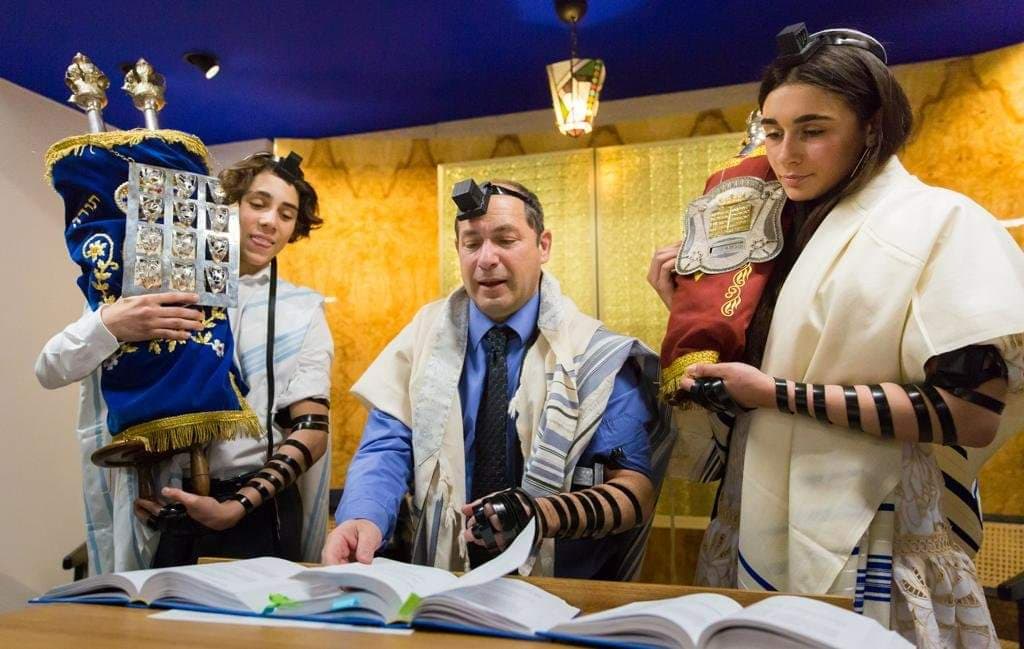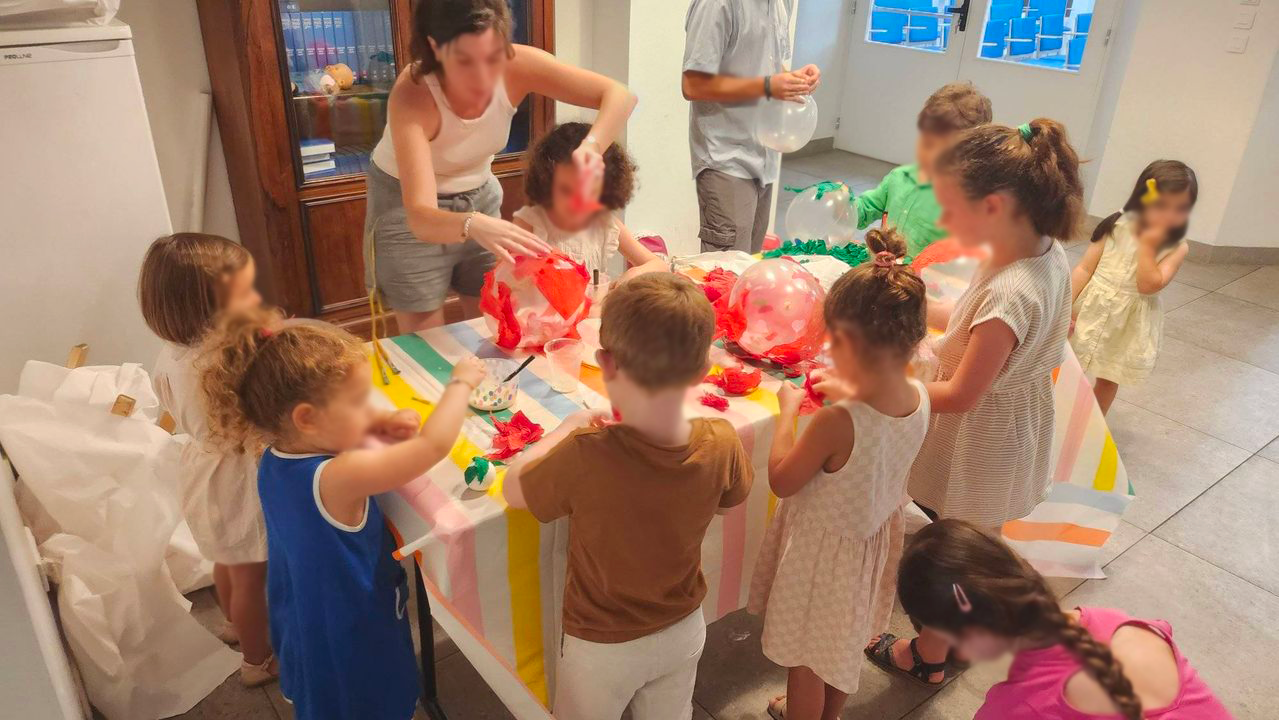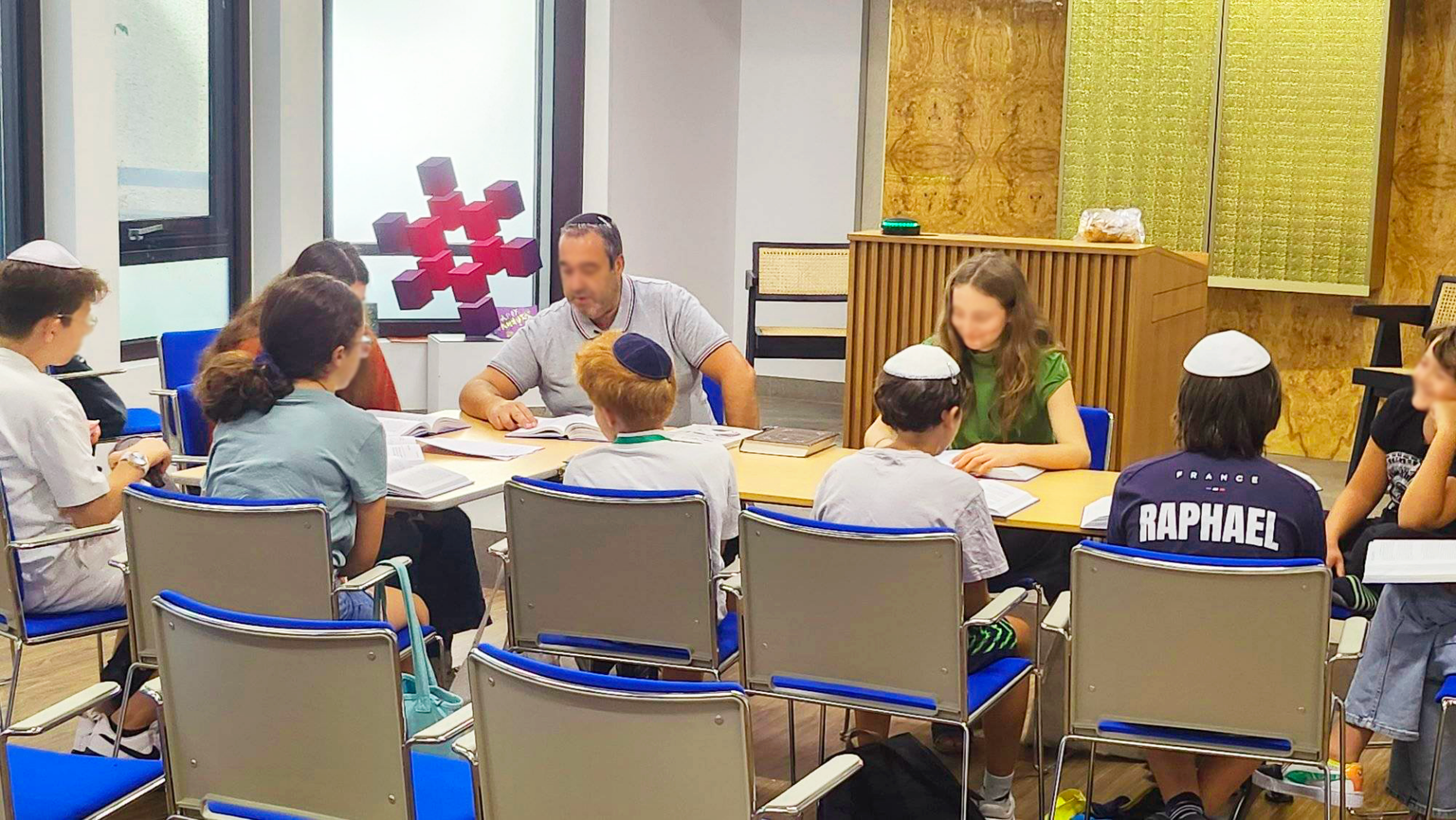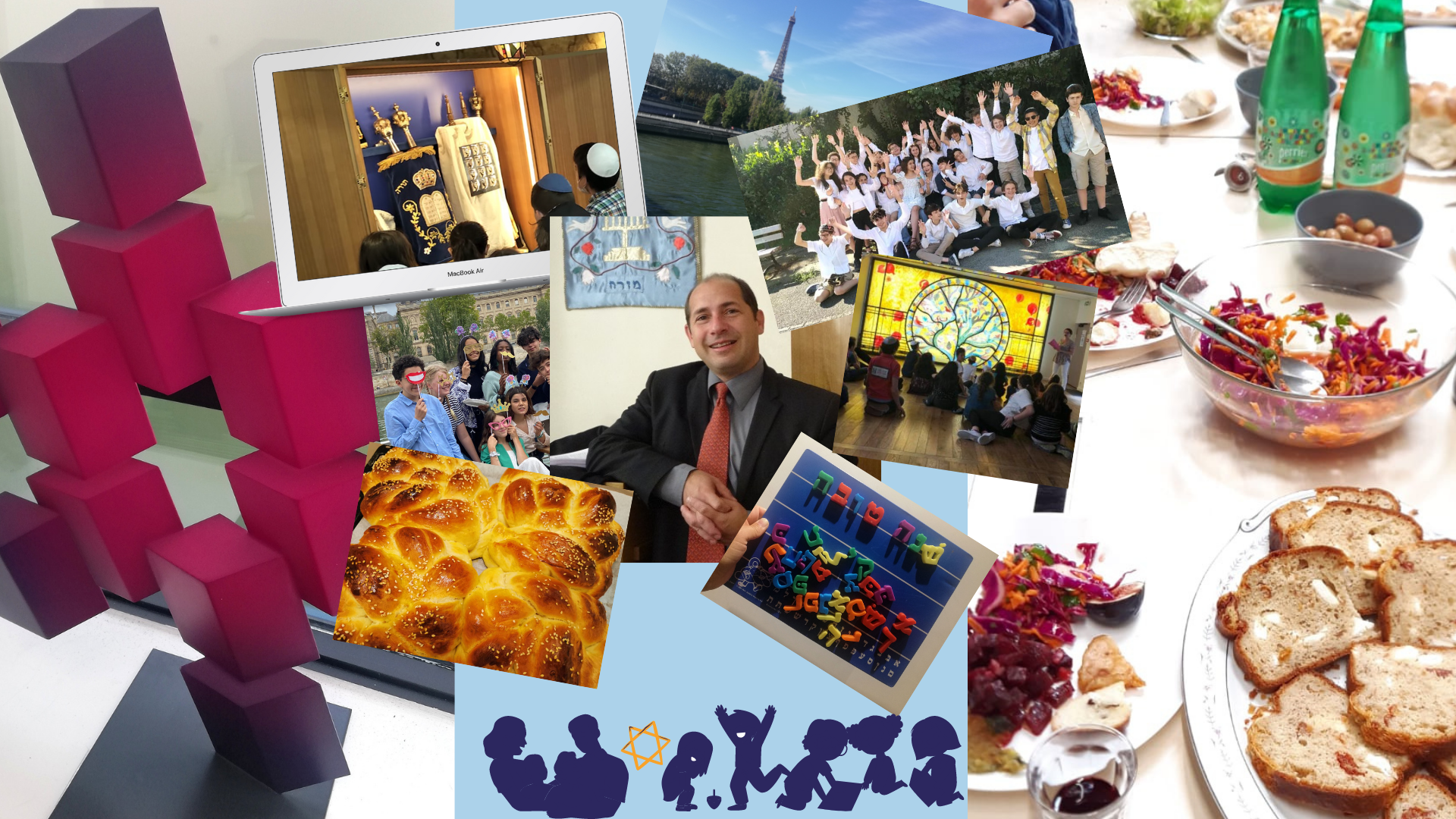
Our Talmud Torah
Our Talmud Torah program aims to teach tradition and values as well as religious knowledge. Based on the principals of tolerance and openness, we offer a hard-working yet supportive environment where kids can learn about and explore their Jewish identities. Classes focus on liturgy, holidays, Jewish history, as well as learning modern Hebrew.
Register here
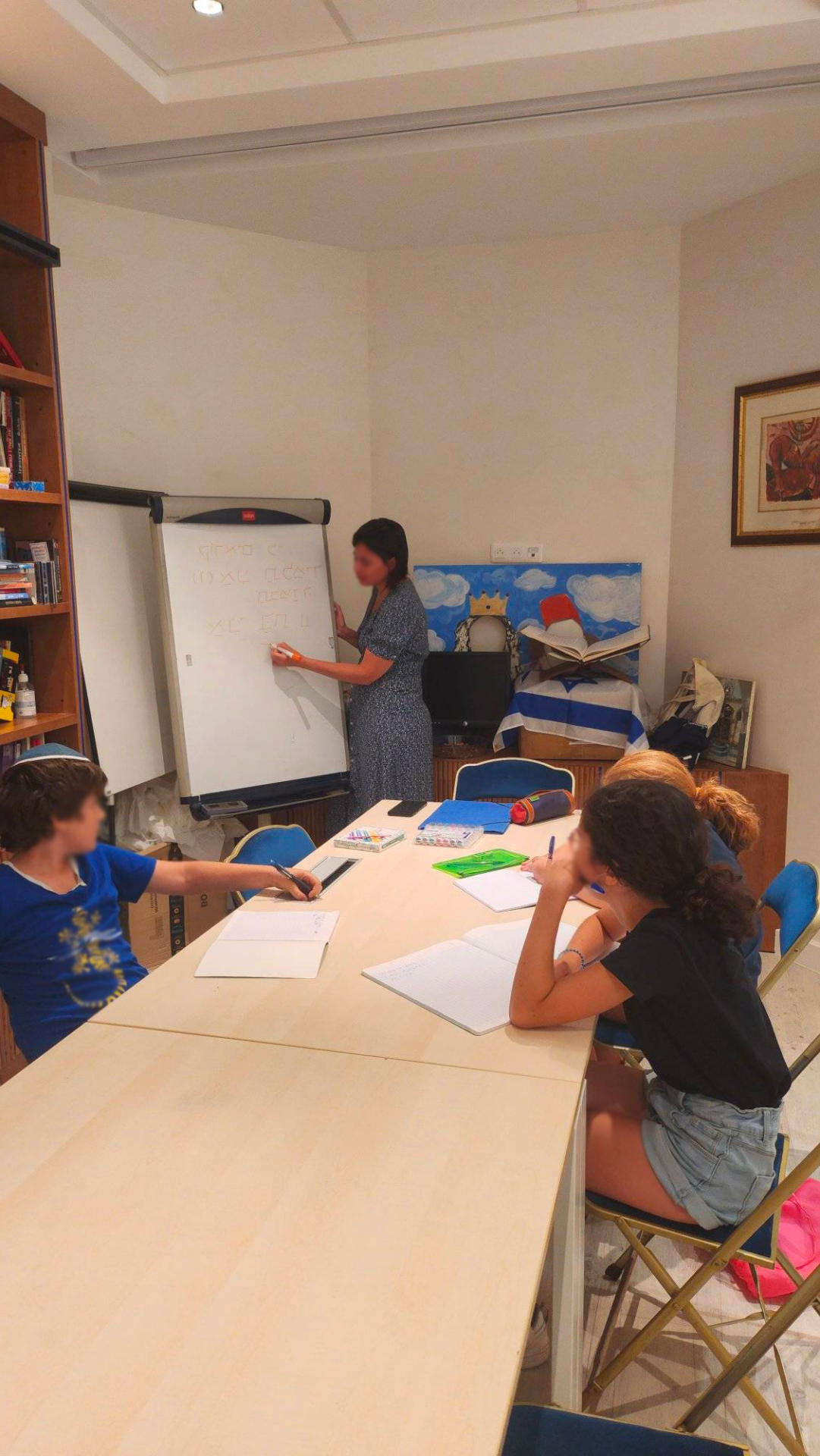 Open House:
Open House:
Usually the first Sunday of the month of September: Please check our calendar.
Back to school:
Please check our calendar.
In our synagogue at 11 avenue de la Porte de Champerret, 75017 Paris
On our first day of Talmud Torah classes we will welcome our new and returning students and their parents, as well as those who would like to find out more about our classes
Our entire Talmud Torah team, including the director and our Rabbi will be there to meet new and returning students and families. Come and pick up this year’s program and find out about upcoming events. If you haven’t done so already, you can sign up for this year – our team will be on hand to answer any questions and help you register. If you’d like to refer a family, we’ll be there to help!
Talmud Torah Enrollment 2023-2024 :
Talmud Torah (Sur 12 mois/Any program YEARLY)
Talmud Torah (3 ans/years – 36 mois/months)
Talmud Torah (4 ans/years – 48 mois/months)
Talmud Torah (5 ans/years – 60 mois/months)
Talmud Torah 2023 Click here
A Talmud Torah for every age
Sunday Funday
up to 6 years old: Sundays 10:00 to 12:30
Beyahad (Talmud Torah initiation year)
7-8 years old: Sundays 10:00 to 12:30
Talmud Torah
starting from 9 years old: Sundays 10am–12:30pm or Wednesdays 3pm–4:30pm
Intensive program
150 hours of class over 18 months (please contact Javier)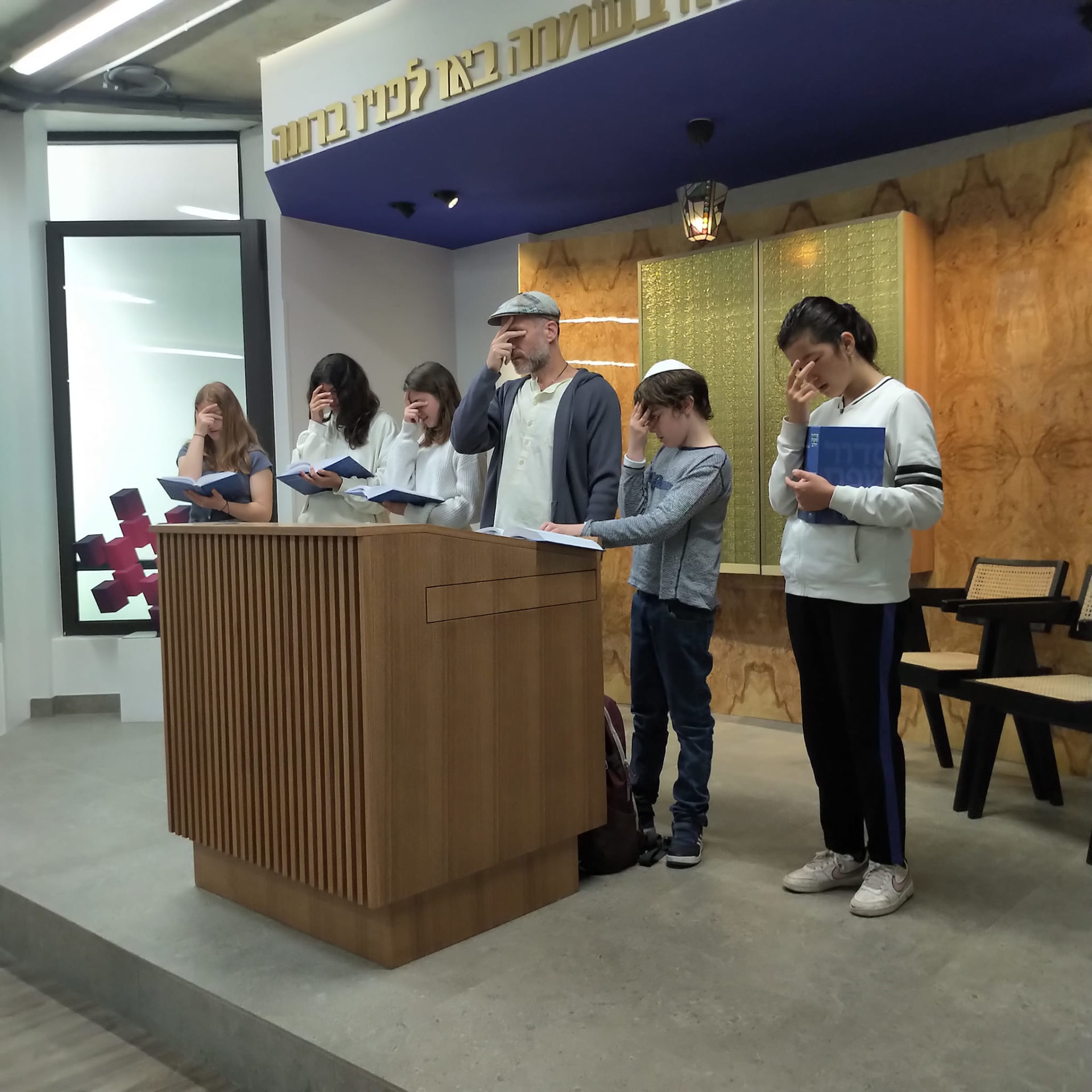
Our team
Direction: Javier Leibiusky
Supervision and Bnei Mitzvah: Rabbin Tom Cohen
Teachers: Manon, Elie, Tyrone, Hodaya, Bree
Contact : talmudtorah.education@
More information
Please note: Families must be members of KG
Tell a friend
5% discount for you; 5% for the friend who signs up
KG’s Talmud Torah
We want to provide a liberal Jewish education that teaches judaism and its core values. Based on the principles of tolerance and openness, we offer a serious but playful education, open to questioning and history, which allows students to explore their Jewish identity. Finally, we offer a Talmud Torah where modern Hebrew is on the forefront. The Talmud Torah journey begins with the little kids. Up to the age of 6 children participate in the Sunday Funday program. These are weekly meetings where kids are exposed to Jewish holidays, as well as the liturgy through games, songs, dance, cooking, etc. Between the ages of 6 and 7, kids participate in the weekly Beyahad program, which is an introduction to the Talmud Torah. As part of this program, students are exposed to the first blessings and prayers, and to the letters of the Hebrew alphabet. This is always done in a fun way, highlighting the joy of sharing these values together. From the age of 8, children enter the Talmud Torah program with the first outcome being the celebration of their Bar or Bat Mitzva. Our Talmud Torah is based on 5 years of study (4 years of Talmud Torah and one year of preparation for the Bar or Bat Mitzva). Each year being a level of knowledge. Some learning is done in a linear fashion throughout this 5-year course – such as modern Hebrew – while others – such as the feasts or the liturgy – are done in a spiral fashion, where certain notions return each year but are further elaborated.
The learning axes of our Talmud Torah are:
Modern Hebrew:In the past few years, we have decided that Hebrew should be taught to our kids, as a living language, and that we should no longer limit children to only learning to decipher letters and vowels without necessarily understanding the content and without having any knowledge of the language.
– Hebrew
We teach kids modern Hebrew, as it is spoken today in Israel. To teach the alphabet, we use the book “Tiyoul beIsrael”. Then we use an ulpan method for children: “yeladim lomdim ivrit” by Irit Talmud. It goes without saying that knowledge of the language greatly promotes clear and fluid reading in the siddur as well as in the Torah. Kids use the language and no longer see it as a difficult and strange text to decipher! The study of Hebrew is structured as such:
Year 1: The objective is to achieve mastery of reading the alphabet and to acquire basic notions in modern Hebrew.
Year 2: We approach the reading of more complex texts while aiming to acquire simple oral skills.
Year 3: We continue to make progress on learning the language, emphasizing the basic notions of Biblical Hebrew and the passage Modern Hebrew > Biblical Hebrew.
Year 4: The study of Hebrew continues while going through the basics, to reinforce the knowledge of the language and the ease of reading.
MB year: Year of preparation for the BM. In the meantime, students continue to strengthen their knowledge of the Hebrew language with an emphasis on the Parasha of each child.
– Judaism
Liturgy:
Regarding the liturgy and knowledge of Judaism, as mentioned above, we give kids an open and inclusive vision of Judaism. The prayers of the Shabbat morning service have of course a privileged place in the teaching, but our Talmud Torah places these prayers in a historical and conceptual context on the one hand, while being well anchored in modern day France.
Year 1: The first year is focused on a first approach to the Torah, its five books, the main stories and characters. In the 2nd and 3rd semesters we take an in-depth look at the story of the exodus from Egypt, the crossing of the desert and the arrival in the Promised Land. During the first year the students learn the prayers especially thanks to the pedagogical offices with which we start every Sunday morning. They also learn the main blessings.
Year 2: The purpose of this second year is to learn the main structure of the Shabbat morning service and to become familiar with the synagogal space and the objects of worship.
What is the pace of the office? When do we ascend to the Torah and in what way? In addition we study the space of the synagogue, the tevah, the ner tamid, objects such as the kipah, tallit, the kiddush worm, etc. Students also learn about the Jewish library (Tanakh, Siddur, Hagadah, Talmud, Mashzor) and an overview of the concept of mitzvah (613, positives, negatives). From this year we are working with the book Tefilati – my prayer, by Yael Hollenberg-Azoulay.
Year 3: This year is devoted to the in-depth study of prayer. In the first trimester we focus on the Shema, the Amidah and Aleynou. In the 2nd quarter we deepen the study of the Amidah and towards the end of the year we deepen the study of the closing of the office with Aleynou. During this third year we study directly on the Siddour of the Talmud Torah then the community Siddour.
Year 4: This last year before the year of preparation for the BM the students deepen the notions of Judaism. We get into more abstract concepts related to Jewish identity. Who are Jews? How did Judaism develop? Differences and commonalities with other religions. The different streams of Judaism.
Jewish holidays:
Year 1: with the Jewish annual cycle, students experience the different festivals in a playful, joyful and profound way. For the students of the first level it is a question of becoming familiar with the Jewish calendar, telling the stories, talking about the mitzvot and customs linked to each of them. For the first level we use the book celebrate the Jewish holidays by Yael Hollenberg-Azoulay. As the children advance we deepen the notions and concepts of halakha related to each holiday, we analyze the reasons behind the different mitzvot and customs and we of course celebrate them together.
Year 2: students study the historical approach of each holiday, making the historical link with the different empires under which the Jews have lived throughout history (Egypt – Passover, Sukkot, Shavuot / Babylonia and Rome – 9 Av / Persia – Purim / Greece – Hanukkah)
Year 3: we deepen and analyze the different berakhot related to each holiday. The study is both lexical and symbolical, the objective being that the student understands what he or she is reciting on the one hand, and why he or she is doing it on the other. Two important moments of the year are the educational Passover sedder and the Shavuot study morning (modeled on the tikkun leil Shavuot). Year 4: Deepening of the symbolic notions of festivals, customs and mitzvot.
Torah:
Years 1&2:
Students become familiar with the Tanakh, through the books Understanding the Torah and Understanding the Prophets by Yael Hollenberg-Azoulay. These two books introduce students to the main characters, the most fundamental stories and teachings.
Years 3 & 4: Students begin to work on the Torah from a more ambitious point of view, penetrating to the heart of the analysis of the biblical text by referring to the biblical commentators, midrashim, etc. We rely on the works “la Torah commentée pour notre temps” by H. J. Fields. This wa,y we draw a line that allows children to make the direct link between the biblical text and their modern life today. The Torah then becomes a living and current text, allowing them to see everyday life situations from another angle.
BM year – Bnei Mitzva course: Directed by our rabbi, Tom Cohen, this last year of study the children will finish integrating the prayers of the siddur, each child works on his parasha and in class the rabbi organizes debates around different ethical subjects in which he adapts Talmudic notions to situations of our modern life. This training empowers children and gives them the tools to lead a Jewish spiritual life in their future and within their families. During this year of preparation, the students work regularly with a rabbinical student who trains them in the technical details of the services, the cantillation and introduces them to the commentaries of the Torah.
Older kids:
Some children arrive at the Talmud Torah around the age of 11 or 12, without any prior knowledge. We have adapted programs that combine Sunday morning classes with additional classes (online or face-to-face) during the week. Please contact us for more information.
Detailed program :
4 years of TT + 1 year BM Objective: to prepare children for BM. After 3 years of study, the children are autonomous, able to read Hebrew fluently, know the Jewish holidays and their customs and blessings, the structure and contents of a Shabbat service as well as the contents of the parashots and a knowledge of some comments.
Each year we work on 4 axes: Hebrew Jewish holidays – basic concepts, customs / brakhot Liturgy – concepts of the office, synagogal objects / opening and closing of the office / important prayers: shema, amida, aleynu Torah – introduction / parashah of the week / comments
MB year: 1st hour – practice of the office with a rabbinic trainee 2nd hour – preparation with the rabbi.
